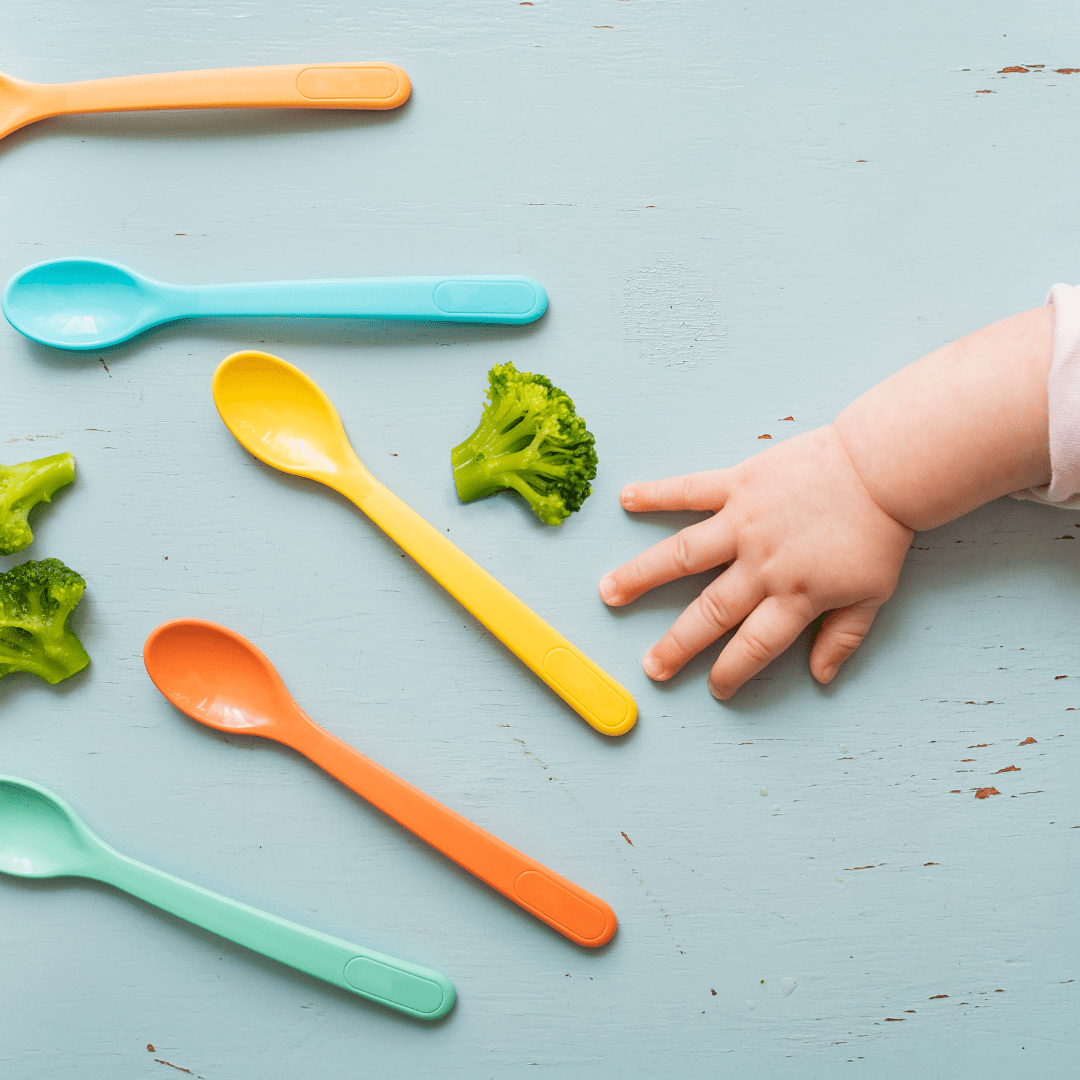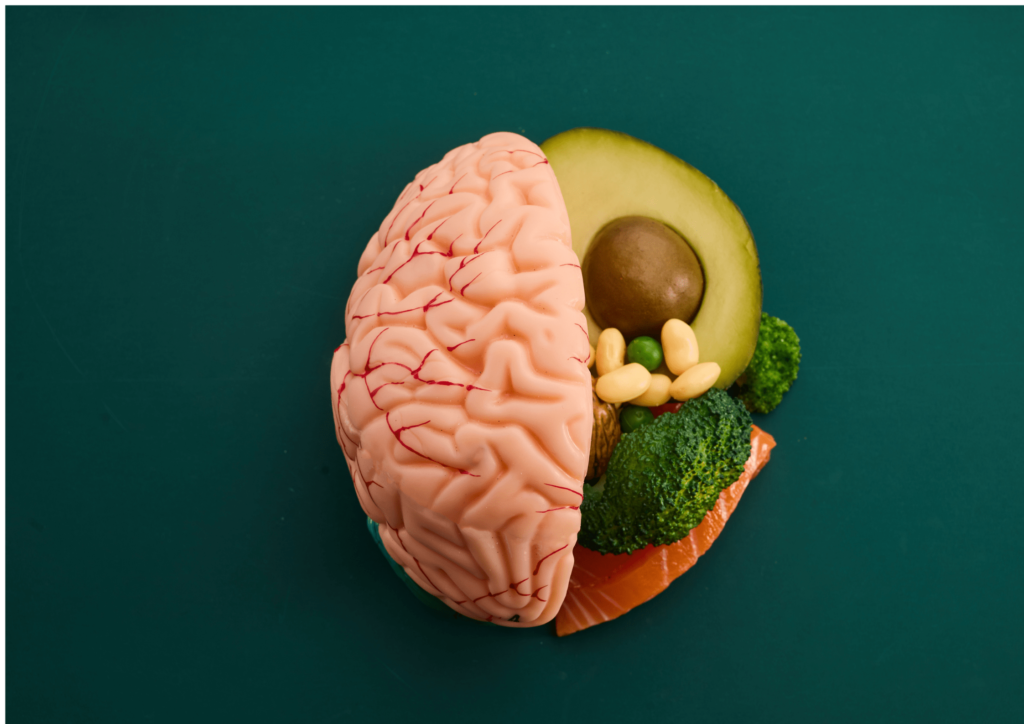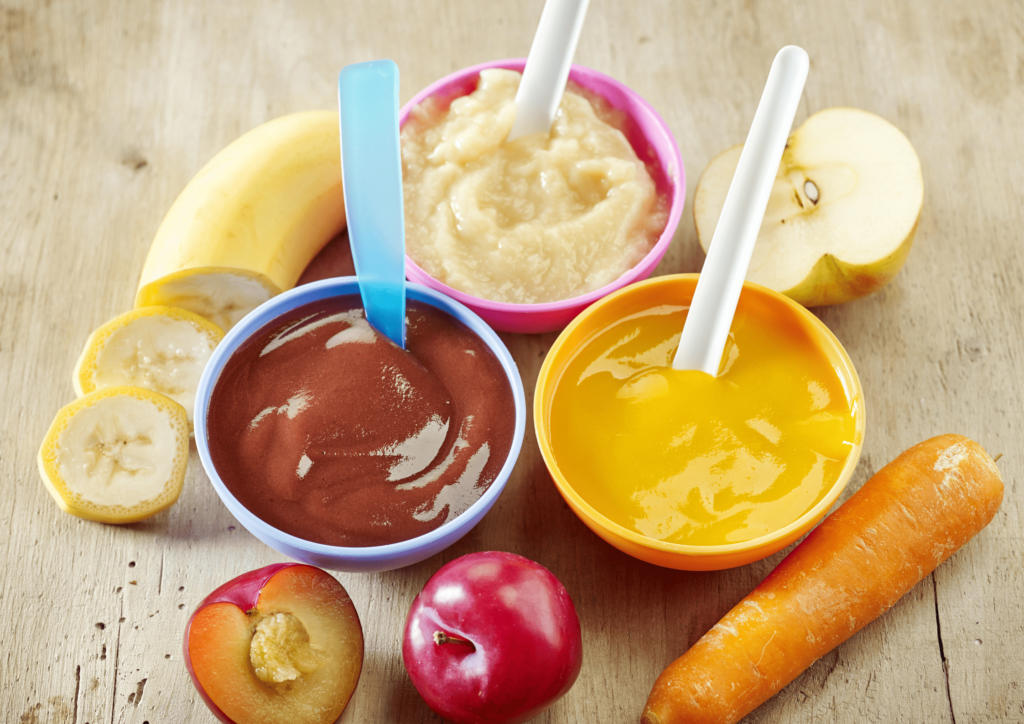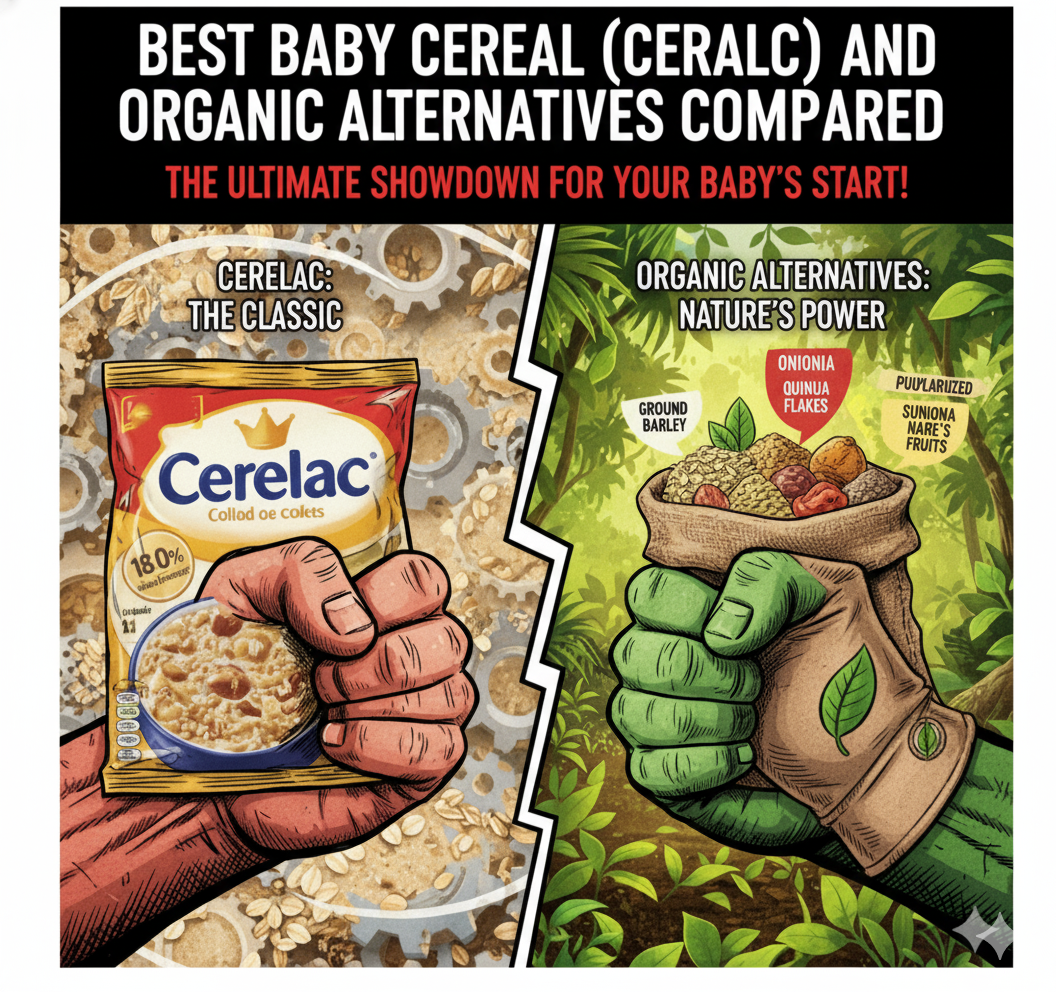
How Much Quantity of Food for 6 Month Baby [Chart + Guide]
Topic
How Much Quantity of Food for 6 Month Baby [Chart + Guide]
May start as early as
At 6 Month
─────────
May end around
12 Months
How much quantity of food for 6 month baby ? – is one of the most common questions new parents ask. At 6 months, your baby is ready to begin solids, but breastmilk or formula still provides the majority of nutrition. The purpose of solids is to explore taste, texture, and swallowing skills—not to replace milk feeds completely.
So, how much food should a 6 month old eat per meal? How many times should a 6 month baby eat solids? This guide covers recommended quantities, sample food charts, portion sizes in ml and tablespoons, and practical tips that parents can use daily.
What all we will cover in the blog?
- Why Portion Sizes Matter at 6 Months
- How Much Food Should a 6 Month Old Eat?
- 6 Month Baby Food Chart by Quantity
- How Many Times Should 6 Month Old Eat Solids?
- Common Mistakes in Feeding Quantities
- FAQs
- Sample Day Plan (6 Month Baby Food + Quantity)
Why Portion Sizes Matter at 6 Months
- The digestive system of a 6 month baby is still developing. Offering the right quantity of food prevents:
- Overfeeding: too much solid food can cause constipation, gas, or reduced milk intake.
- Underfeeding: too little food may delay nutrient exposure, especially iron-rich foods.
- Balanced growth: correct portion sizes help healthy weight gain while keeping milk feeds primary
- Remember: every baby is unique. Portion recommendations are averages—you should adjust based on hunger and fullness cues.
Know about detailed – 6 Month Baby Food Guide
How Much Food Should a 6 Month Old Eat?
At the start of solids:
- Begin with 2–3 teaspoons of a thin puree once daily.
- Gradually increase to 2–3 tablespoons per meal, 2–3 meals per day.
- This equals 90–120 ml total solid food daily, spread across meals.
👉 Important question by parents : How much quantity of food for 6 month baby? The safe range is about 30–40 ml per meal while continuing breastmilk or formula on demand.

6 Month Baby Food Chart by Quantity
Here’s a sample chart you can follow. Quantities are approximate and may vary depending on appetite.
| Meal | Quantity (approx) | Example foods (6 months) |
|---|---|---|
| Breakfast | 2–3 tbsp (30–40 ml) | Ragi porridge, mashed banana |
| Mid-morning | 2–3 tbsp (30 ml) | Steamed apple puree, carrot mash |
| Lunch | 2–3 tbsp (30–40 ml) | Rice-dal porridge, khichdi puree |
| Evening | Optional 1–2 tbsp | Yogurt (unsweetened), pear puree |
Know about detailed – 6 Month Baby Food Chart
Signs Baby Is Eating the Right Quantity
Instead of measuring only by spoons, observe cues:
- Hunger signs: leaning forward, opening mouth, grabbing spoon.
- Fullness signs: turning head away, pushing food out, closing lips, distracted.
- Growth signals: steady weight gain, 5–6 wet diapers/day.
👉 Get detailed guidance : Weight Gain Foods for 6 Month Baby
👉 If your baby shows interest, you can slowly increase from teaspoons to tablespoons over weeks. If they turn away, don’t force—it’s part of learning.
How to Start Food for 6 Months Baby

What Foods Work Best in Quantities?
- Iron-rich foods: ragi, dal, green peas.
- Vitamin C foods: apple, pear, sweet potato (to help absorb iron).
- Energy foods: banana, rice porridge.
- Fat-rich foods: small amounts of ghee or mashed avocado (help growth).
Portion example: 2 tbsp rice-dal porridge + 1 tsp ghee = ~40 ml serving.
How Many Times Should 6 Month Old Eat Solids?
- Week 1: once daily (2–3 tsp).
- Week 2: twice daily (2–3 tbsp).
- Week 3–4: 2–3 meals/day, each 2–3 tbsp.
- Keep adding breastfeeds/formula between meals.
So by the end of the 6th month, babies may take 3 small meals + 6–8 milk feeds/day.
Common Mistakes in Feeding Quantities
Replacing milk too early → solids are complementary, not a substitute.
Forcing food → creates aversion.
Skipping iron foods → risk of anemia.
Serving large bowls → overwhelms baby; small portions are better.
Adding sugar or salt → not safe before 1 year.
FAQs on Quantity for 6 Month Babies
Q1. How many ml of food for 6 month baby?
Around 30–40 ml (2–3 tbsp) per meal, 2–3 times daily.
Q2. How much solid food for 6 month baby per day?
Total ~90–120 ml (about 6–9 tbsp) spread across meals.
Q3. How many times should 6 month old eat solids?
Start with 1 meal/day, gradually move to 2–3 meals/day.
Q4. Can portion sizes increase weekly?
Yes—start small, increase every few days if baby accepts.
Q5. Should quantity replace milk feeds?
No—breastmilk/formula remains the main nutrition until 12 months.
Q6. What if baby refuses food?
Skip the meal, try again later. Avoid force feeding
Sample Day Plan (6 Month Baby Food + Quantity)
| Time | Food & Quantity | Notes |
|---|---|---|
| 7:00 am | Breastfeed/formula | Main nutrition |
| 9:00 am | 2 tbsp mashed banana | First solid meal |
| 12:00 pm | Breastfeed/formula | |
| 1:00 pm | 2 tbsp rice-dal porridge | Introduce iron |
| 3:00 pm | Breastfeed/formula | |
| 5:00 pm | 2 tbsp steamed apple puree | Optional snack |
| 7:00 pm | Breastfeed/formula | |
| 9:00 pm | Bedtime breastfeed/formula | Final feed |
Key Takeaways
- How much quantity of food for 6 month baby? → 2–3 tbsp per meal, 2–3 meals/day.
- Breastmilk/formula = primary nutrition until 1 year.
- Watch baby’s cues for fullness/hunger.
- Use iron + vitamin C combinations (dal + fruit).
- Gradually increase meal sizes, don’t force feed.
Research & Resources
Global Health Guidance
- World Health Organization (WHO) – Complementary Feeding: Report of the Global Consultation
👉 Recommends starting solids at 6 months with gradual increase in portion and frequency.
WHO Complementary Feeding - Centers for Disease Control and Prevention (CDC) – Infant and Toddler Nutrition: Foods and Drinks
👉 “Start with 1–2 tablespoons, once or twice a day, and gradually increase.”
CDC Infant Nutrition - NHS (UK National Health Service) – Your Baby’s First Solid Foods
👉 “Begin with small amounts once a day, gradually increasing as your baby gets used to food.”
NHS Weaning Guidance
Research Studies
Panfili, L. et al. (2021). Complementary Feeding: New Insights Into Timing and Composition. Frontiers in Pediatrics.
👉 Reiterates the importance of portion control, iron-rich foods, and gradual variety in diet.
Dewey, K.G. (2013). Nutrition, Growth, and Complementary Feeding of the Breastfed Infant. Pediatric Clinics of North America.
👉 Confirms that energy and nutrient requirements increase at 6 months, requiring complementary foods.






